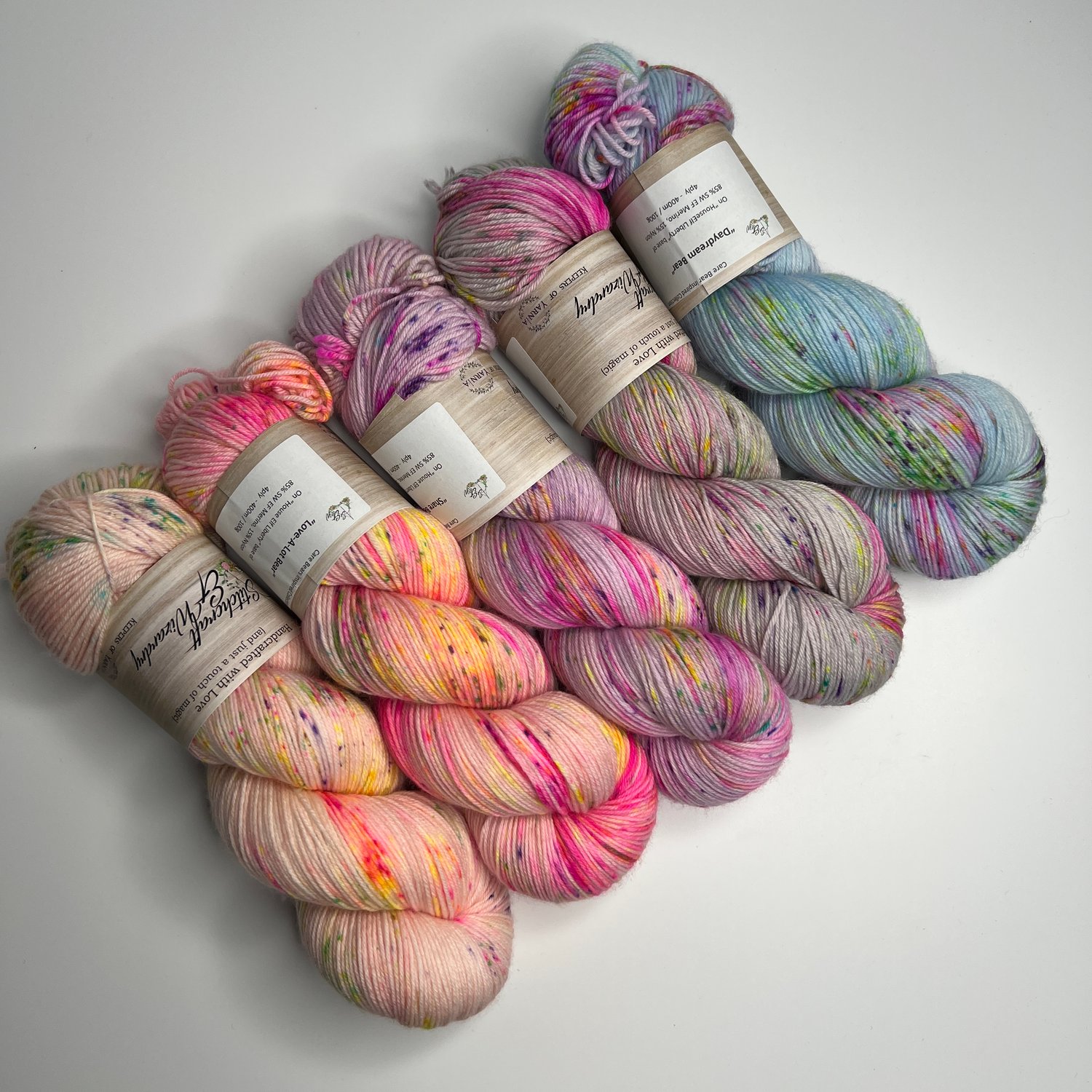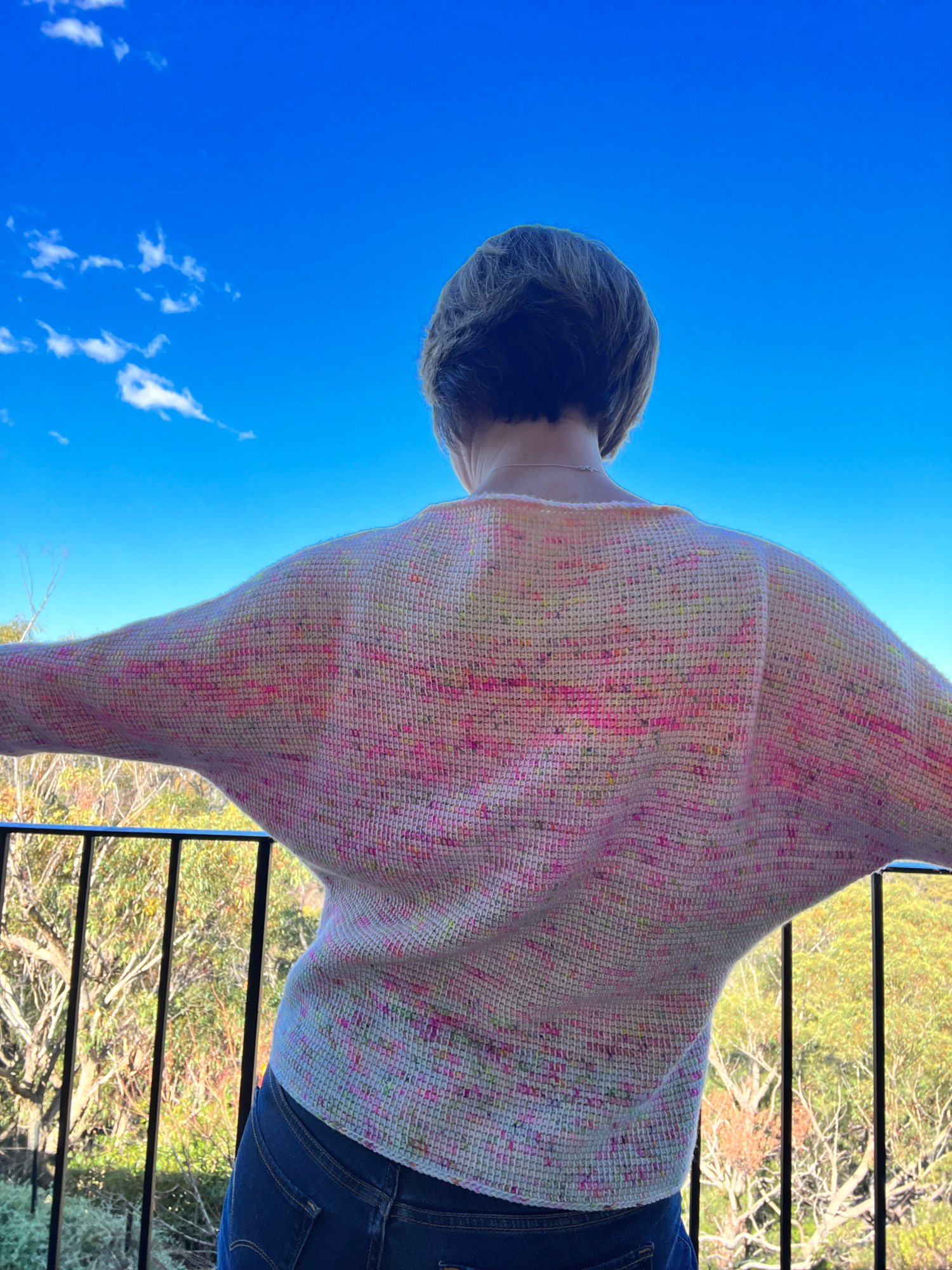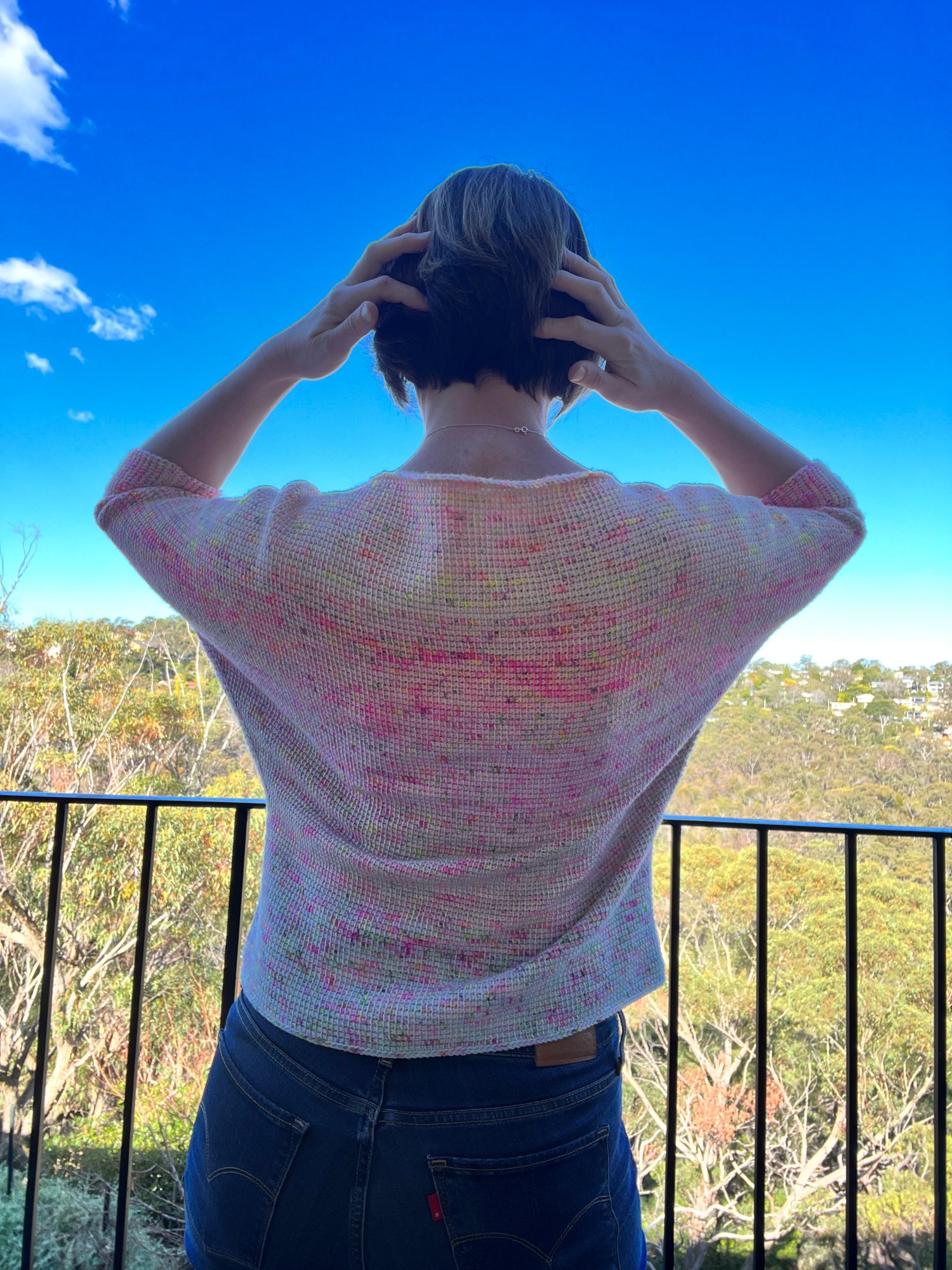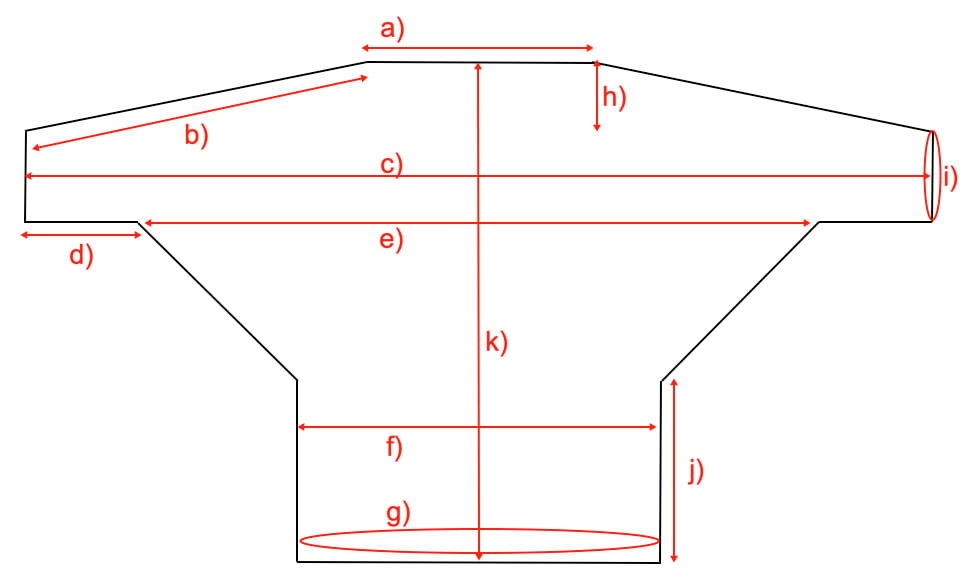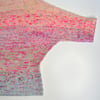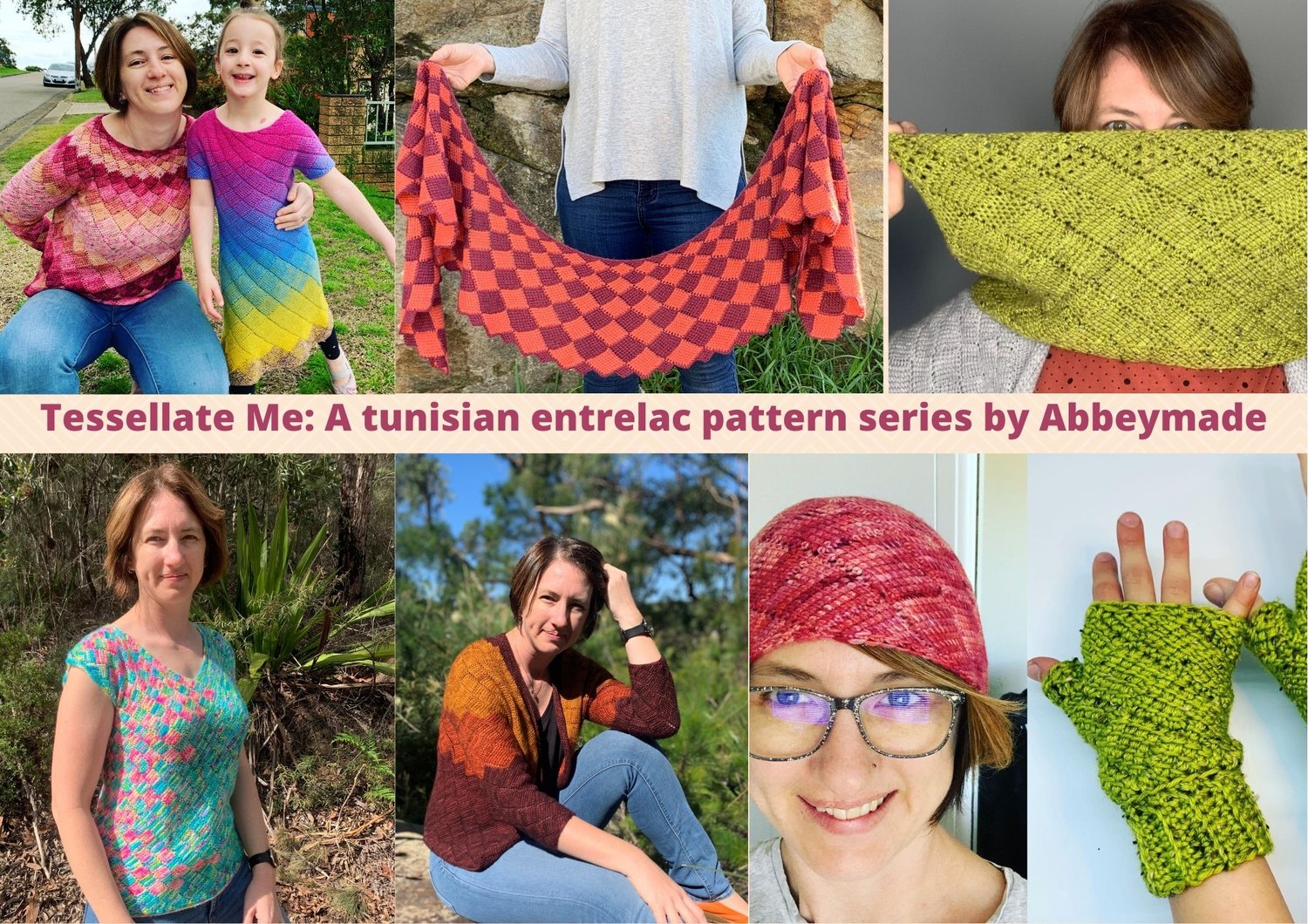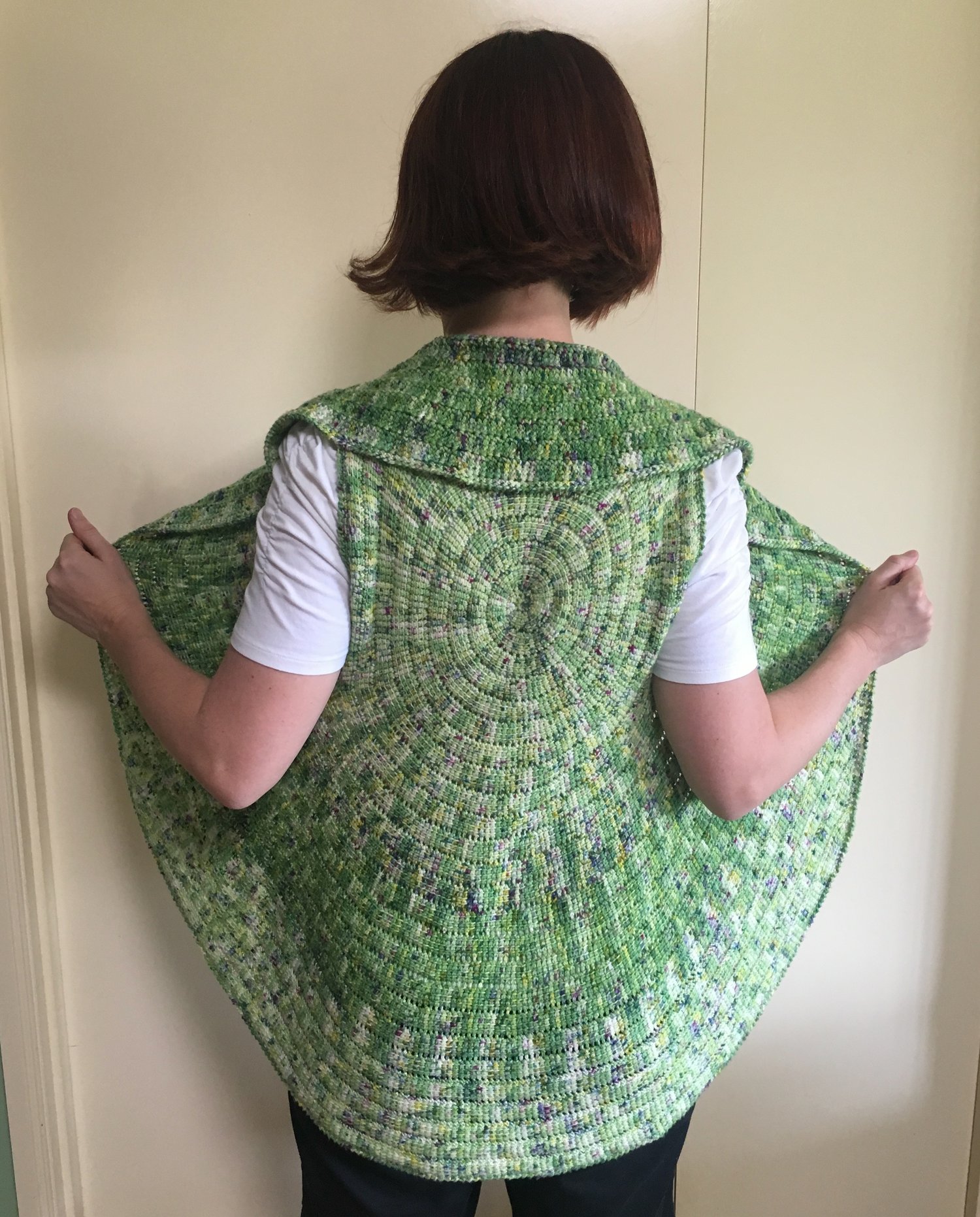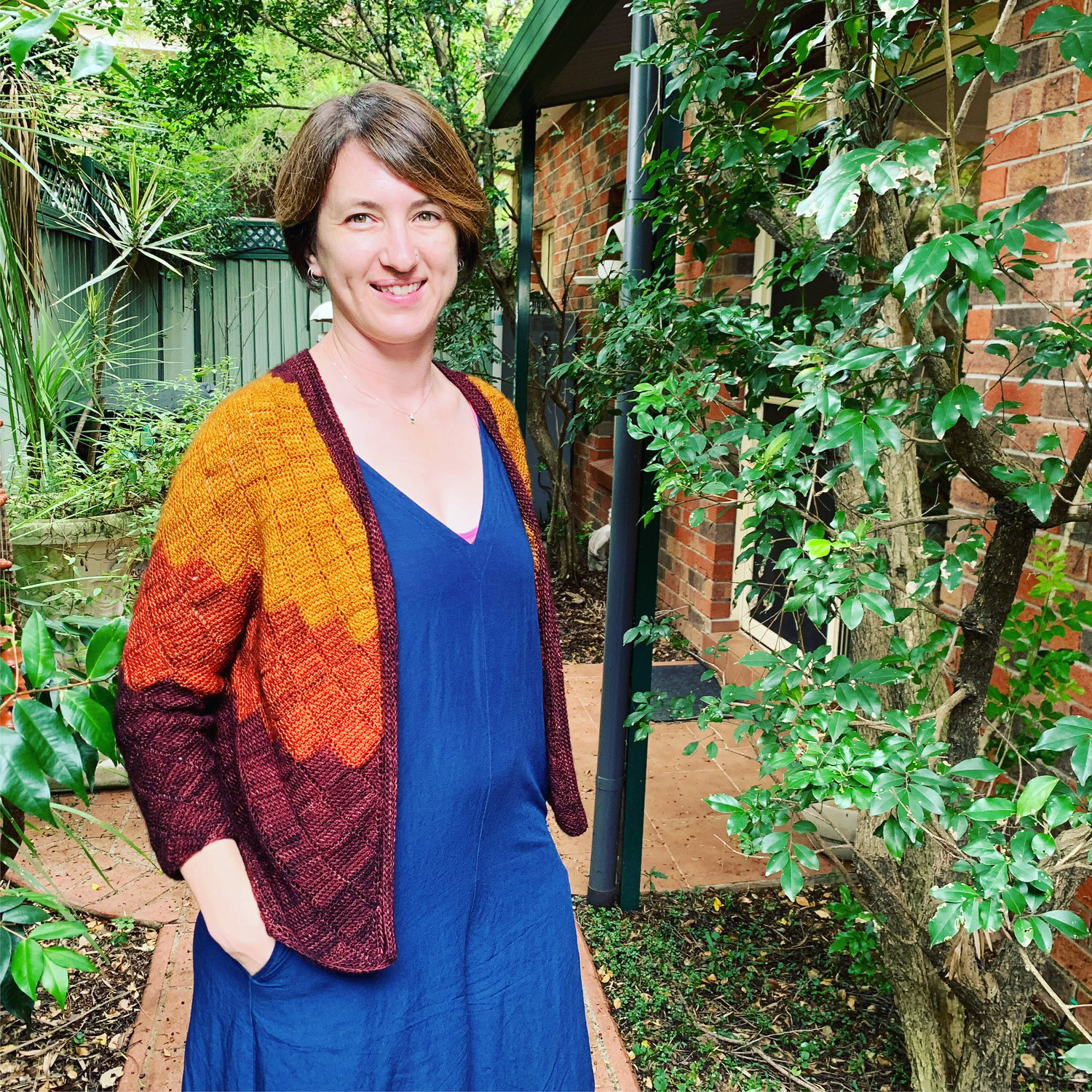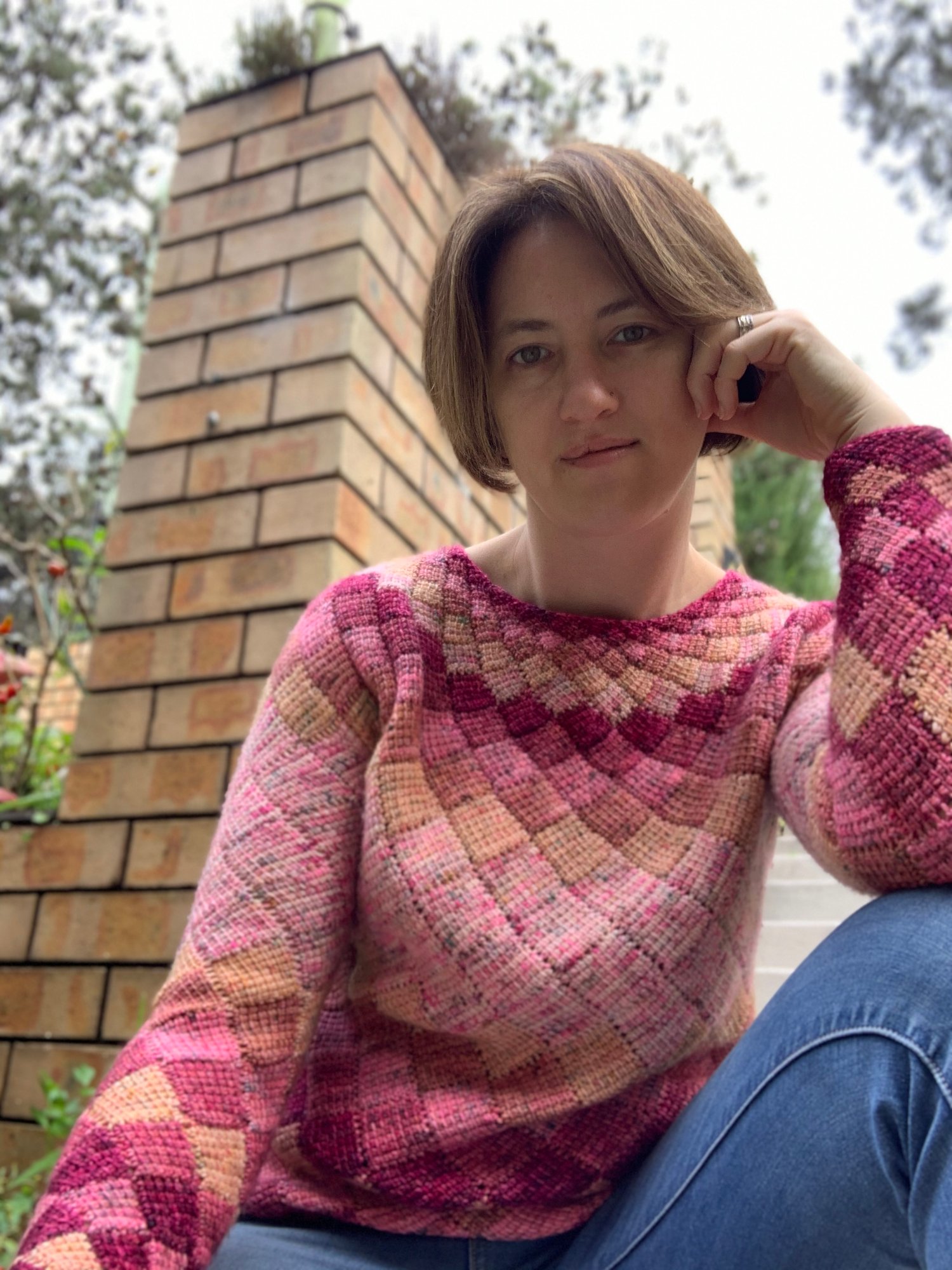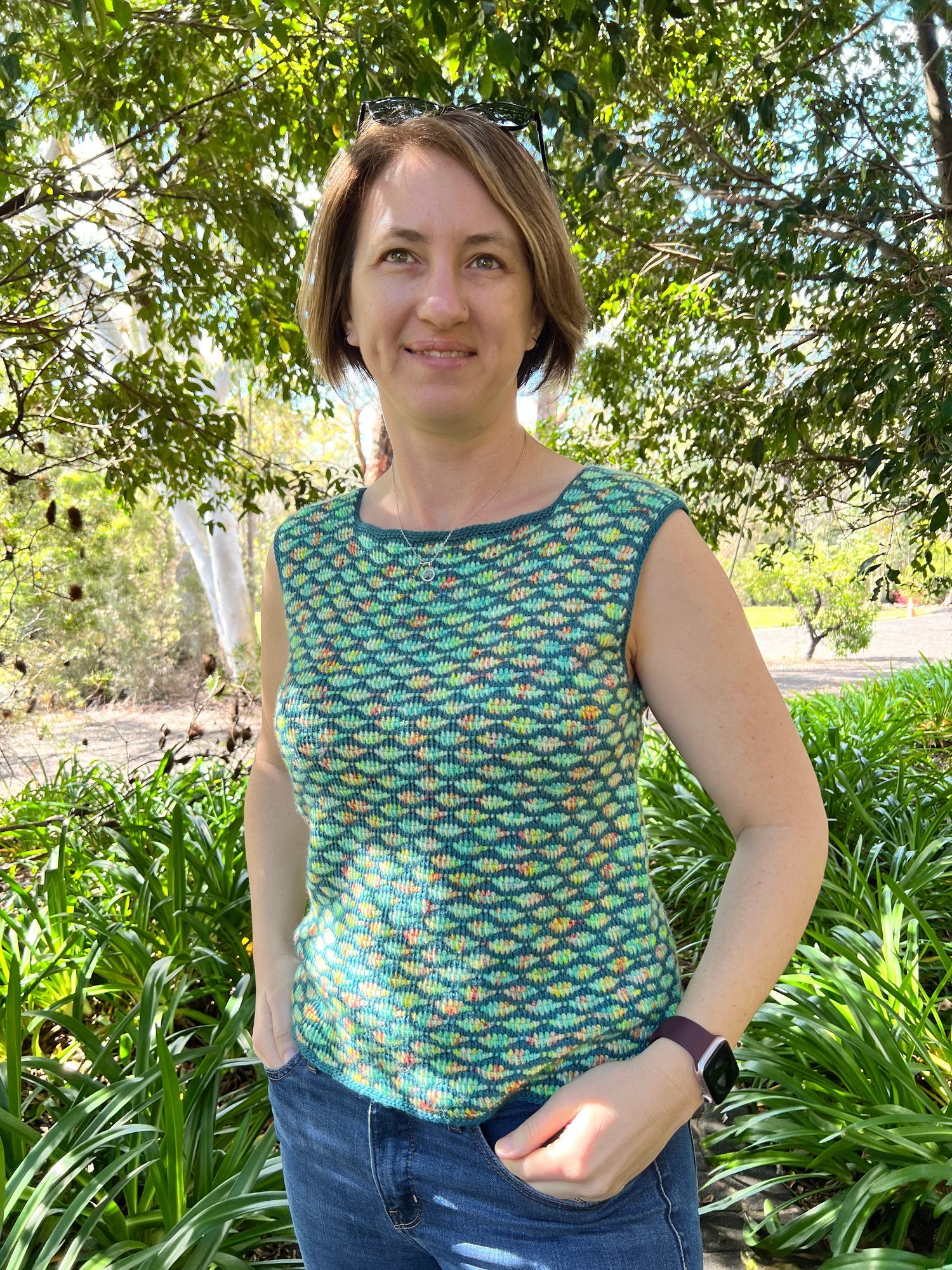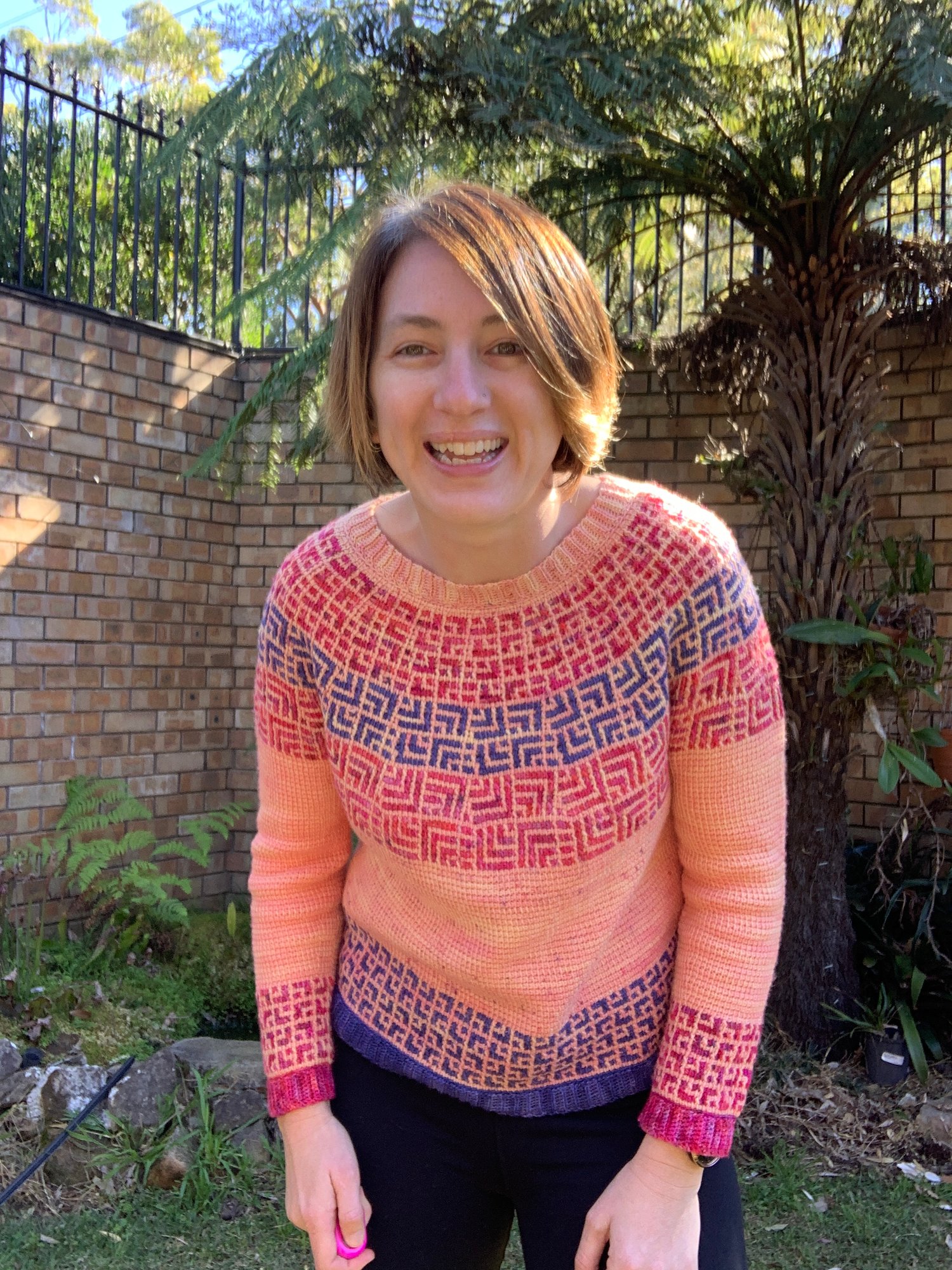Wirambi
This product is a digital Tunisian Crochet pattern.
Wirambi is the Dharag word for ‘bat’ . Dharag is the language of the Dharawal people who come from a large area south of Sydney, Australia. The Dharawal people are the traditional custodians of the land upon which I live. I thought calling this sweater ‘bat wing’ was boring but apt, so I decided to call upon Australia’s ancient history for its name. Our house backs onto bushland. The soft tones of green surround our home and I see flashes of bird life all day. At night, we hear the little fruit bats as they whizz past our bedroom, often feasting on insects they find in the trees in our native garden, especially in the summertime.
Wirambi is made in two pieces from the top down, which are then seamed. The pieces start with a very long chain and some very long rows. A series of short rows are made which creates a subtle shoulder drop that achieves perfect drape on the arms.
Supplies
5mm interchangeable Tunisian crochet hook with detachable cable.
Detachable cable at least 80cm long for making the first part of the sweater. Change to a shorter cable for the torso if desired.
2 stitch markers
Darning needle
Yarn & Quantity
Stitchcraft & Wizardry fingering weight “House Elf Liberty” base of 85% superwash, extra fine merino and 15% nylon. Australian 4 ply, 100g/400m.
325 (400, 425, 450, 475)(500, 525, 550, 575) grams
1300 (1600, 1700, 1800, 1900)(2000, 2100, 2200, 2300) metres
1422 (1750, 1859, 1968, 2078)(2187, 2297, 2406, 2515) yards
Sample is made in size 3 and used a 5 x 100g fade set called ‘Care Bears’.
Sizes & Measurements
Sizes available are 1 (2, 3, 4, 5)(6, 7, 8, 9).
Refer to attached schematic for measuring points as listed below.
a) Neck opening width: 21 (23, 23, 23, 23)(23, 25, 25, 25)cm / 8.25 (9, 9, 9, 9)(9, 9.75, 9.75, 9.75)”
b) Sleeve from neck opening to cuff: 42 (43.5, 45.5, 48, 50.5)(53, 54.5, 54.5, 56.5) cm / 16.5 (17, 18, 19, 19.75)(20.75, 21.25, 21.25, 22.25)”
c) Width from cuff to cuff: 105 (109.5, 114.5, 119, 124)(128.5, 133.5, 133.5, 138)cm / 41.25 (43, 45, 46.75, 48.75)(50.5, 52.5, 52.5, 54.25)”
d) Sleeve from armpit to cuff: 19 (19, 19, 19, 19)(19, 19, 16.5, 16.5)cm / 7.5 (7.5, 7.5, 7.5, 7.5)(7.5, 7.5, 6.5, 6.5)”
e) Upper torso width (outer armpit): 66.5 (71.5, 76, 81, 85.5)(90.5, 95, 100, 105)cm / 26.25 (28, 30, 31.75, 33.75)(35.5, 37.5, 39.25, 41.25)”
f) Lower torso width: 43 (47.5, 52.5, 57, 62)(66.5, 71.5, 76, 81)cm / 16.75 (18.75, 20.5, 22.5, 24.25)(26.25, 28, 30, 31.75)”
g) Lower torso circumference: 85.5 (95, 105, 114.5, 124)(133.5, 143, 152.5, 162)cm / 33.75 (37.5, 41.25, 45, 48.75)(52.5, 56.25, 60, 63.75)”
h) Shoulder drop from neck to end of short rows: 15cm / 6”
i) Cuff circumference: 24 (24, 28.5, 28.5, 31.5)(31.5, 36, 36, 40)cm / 9.5 (9.5, 11.25, 11.25, 12.5)(12.5, 14, 14, 15.75)”
j) Lower torso height: 16 (16, 16, 16, 16)(16, 16, 16, 16)cm / 6.25 (6.25, 6.25, 6.25, 6.25)(6.25, 6.25, 6.25, 6.25)”
k) Total height at middle: 56.5 (56.5, 58.5, 58.5, 60)(60, 62, 62, 64)cm / 22.25 (22.25, 23, 23, 23.5)(23.5, 24.5, 24.5, 25.25)”
Skills required to make Wirambi
The entire sweater is made from Tunisian simple stitch (tss). Some of the rows are very long.
Short rows are incorporated for 30 rows at the start of both sides of the sweater. Video tutorials and an informative blog accompanies this pattern which explains in full how to make short rows that don’t result in holes in the fabric. It is highly recommended to make swatches in a thicker yarn prior to making the sweater to have a good understanding of how to make centre short rows properly.
Three different seaming videos are provided which give the best examples on how to seam Tunisian simple stitch in different circumstances.







